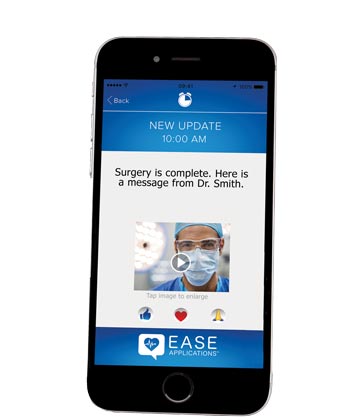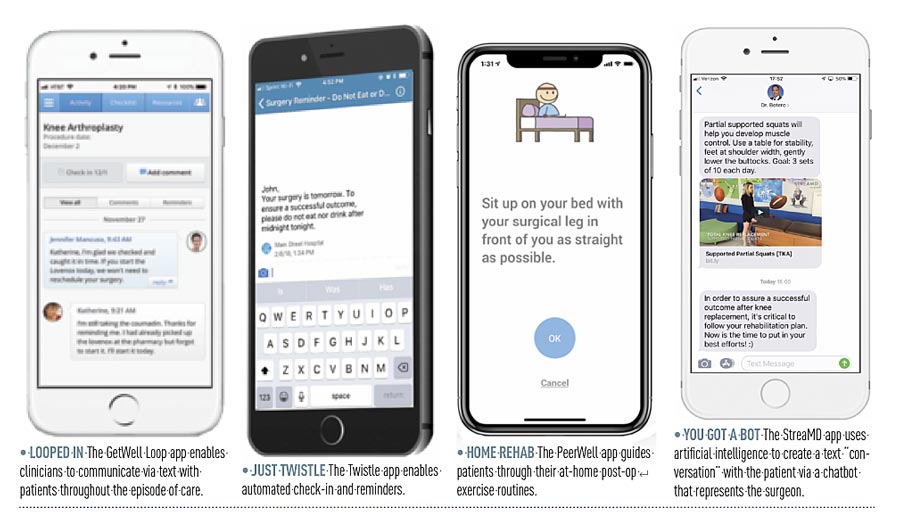Your everyday focus is to improve patients’ lives through superior care while providing an experience that’s as pleasant and safe as possible. But what about engaging patients through an entire episode of care — before and after the day of surgery, when they’re not at your facility — and beyond? Enter the rapidly expanding universe of patient engagement software and apps. When implemented properly, these systems can improve patient outcomes, create stronger bonds between you and your patients, save time and improve your bottom line. As we shift to value-based episodes of care and bundled payments, clinically and cost- effective digital engagement will become even more important.
With patient engagement software and apps, your patients gain a handy tool that can enable them to take more proactive control and ownership over their health while feeling more connected to your facility. The episode of care becomes even more collaborative and personalized between patient and provider.
“Many times, patients see themselves as patients only when they’re with us, and when they leave, they see themselves as everyone else, just a human being,” says Neil Gomes, BSc, MBA, MMS, MEd, chief digital officer and executive vice president for technology innovation and consumer experience with Thomas Jefferson University and Jefferson Health in Philadelphia, Pa., which has both internally developed apps and worked with third parties to enhance the patient experience. The goal is to bind the patient, their continued well-being, and their providers on a continuous basis — for life, essentially. But patients and staff “have to see the value in it, or they won’t use it,” notes Mr. Gomes.
There are many patient engagement platforms out there promising to manage various aspects of the patient-provider relationship — and freeing up staff to do more important things than taking and making patient phone calls. Chances are, there’s a product or platform with the right cost-to-features mix for your facility.
.svg?sfvrsn=be606e78_3)


.svg?sfvrsn=56b2f850_5)